everyone:
Here is my question related to the pandas package how to fill in the rows which are missing in the sequencial calendar.
Background:
the table is a sample of my dataset with sale record. As you know, some of products are poor sales. Therefore, we can find some records are absent for "Category-A & product-seed" in 201003 -201005. Hence, it is hard for me to calculate the "sequential growth rate%" for each group in catagory-product.
Initially, I would like to use "groupby+apply" to dig out which periods are lost for each group, then I can recover and "pct_change" them. While it don't work. I don't know where is the root cause...
If you know how to do that, could you share with us your opinion? Appreciate!
Calendar:
Add some information:
my calendar is a srting that is consist of "month/quarter/semi-annua/annuall" insteal of date-time format. For example, 2010Q1,or 2019H1. So I hope there is a way to fill in the missing rows by my specific calendar.
In otherwords, I would like to do the first step is to calculate which rows are absent between my specific calendar. And then seconde step is that python can inser the missing rows with catagory and product infomation. Thanks.


